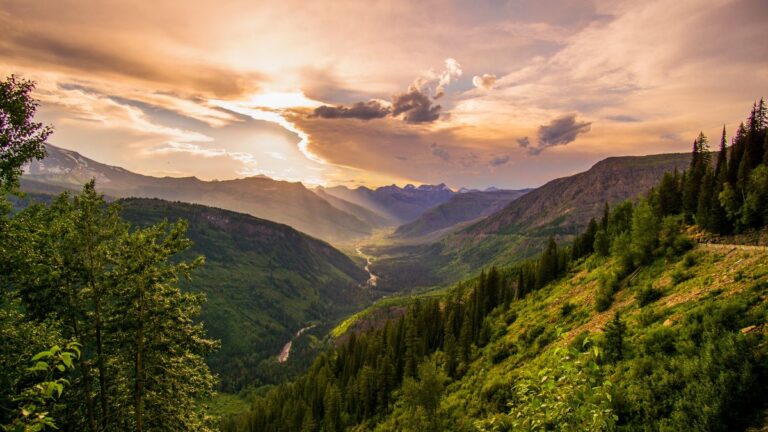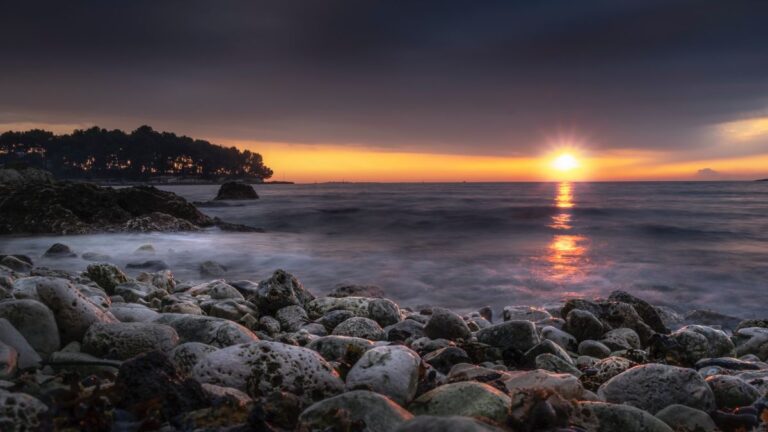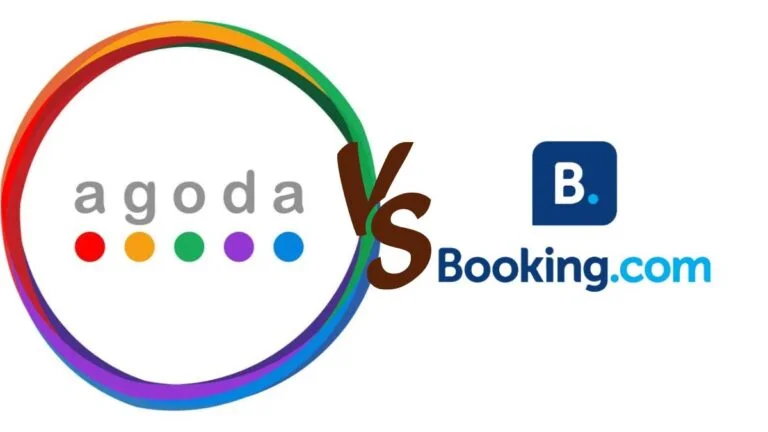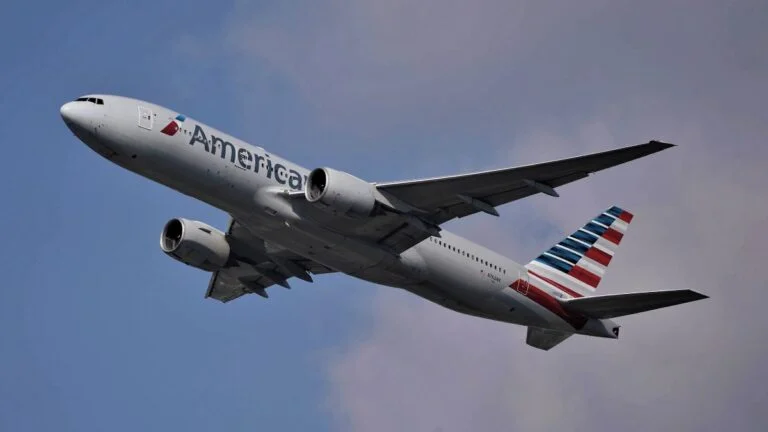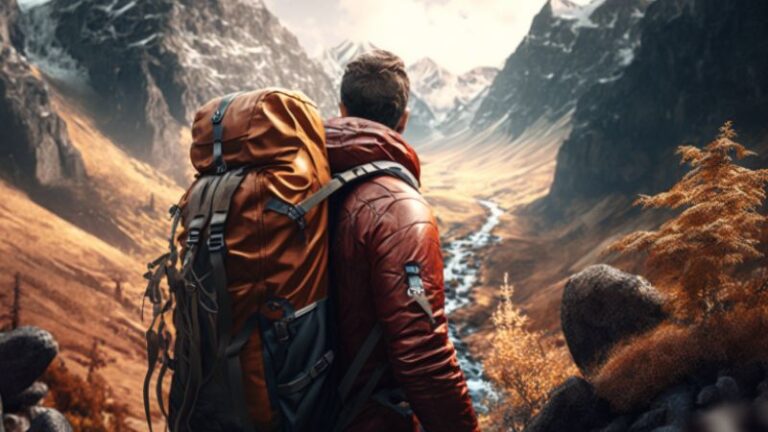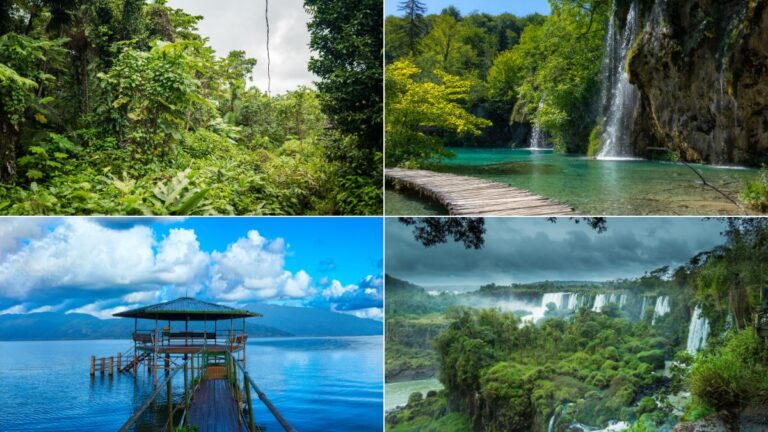Worst Time to Visit Hawaii: Unveiling the Island Paradise’s Seasonal Challenges
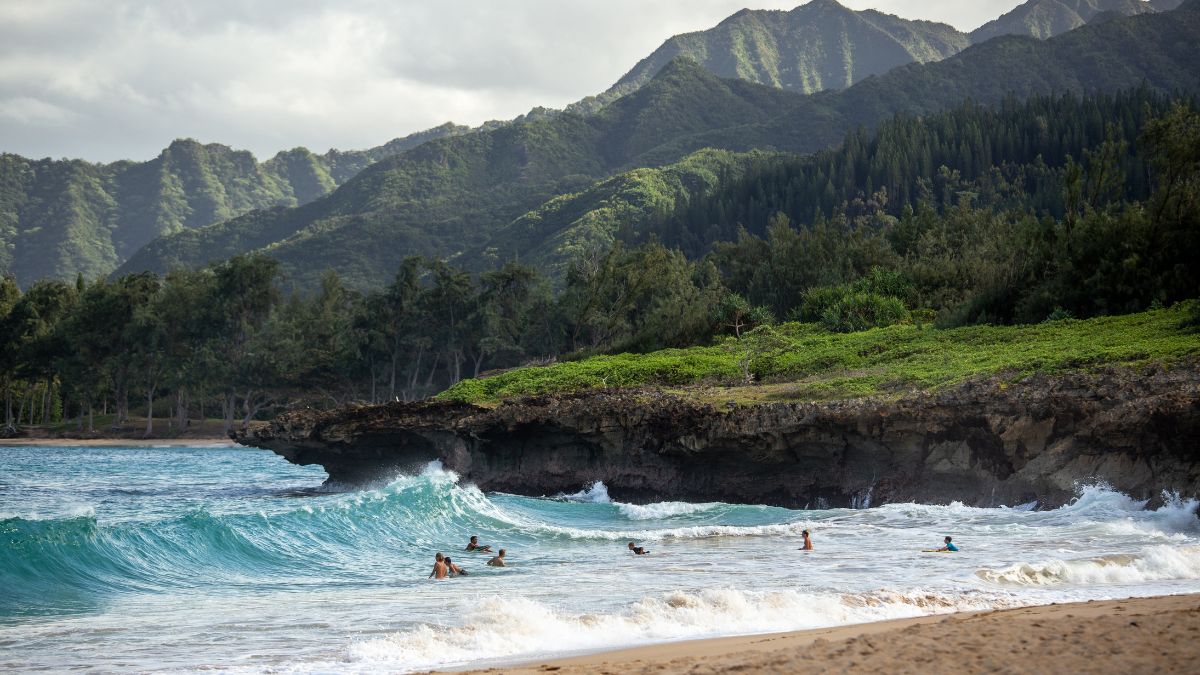
As participants in Amazon Associates and other programs, we earn from qualifying purchases. This comes at no additional cost to you. For more details, see our Affiliate Disclosure.
Hawaii is often thought of as an island paradise with its stunning beaches, warm weather, and lush greenery. However, even paradise has its challenges. In this article, we will unveil the seasonal challenges of visiting Hawaii and help you determine the worst time to visit this beautiful destination.
From crowded beaches and high costs to unpredictable weather patterns and hurricane risks, we’ll guide you through the factors you need to consider before planning your trip to Hawaii.
Here’s a table summarizing the worst times to visit Hawaii based on various factors:
| Factor | Time of the Year | Reason |
|---|---|---|
| Crowds | Mid-December – Early January, Summer (June – August) | High tourist season resulting in crowded beaches and attractions, higher prices, and possible overbooking. |
| Weather | November – March | Rainy season with a higher chance of storms, overcast skies, and rough seas, particularly on the north shores of the islands. |
| VOG | Varies (dependent on volcanic activity) | Potential health issues due to volcanic smog, particularly on the Big Island. Impacts the air quality and visibility. |
| Accessibility | Off-peak season (Late fall – Early spring) | Reduced services from tour operators, potential closures of trails and attractions due to weather conditions, less frequent flights and ferries between islands. |
| Marine Hazards | Varies (dependent on marine conditions) | Presence of box jellyfish usually increases 7-11 days after a full moon, creating potential hazards for swimmers. Winter months also see higher surf, especially on the north shores. |
| Cost | Mid-December – Early January, Summer (June – August) | Peak seasons result in higher prices for flights, accommodations, and sometimes attractions. |
The Curse of the Hurricane Season: Nature’s Power Show
The state of Hawaii is, without a doubt, a tropical marvel. However, with its geographical location in the Pacific Ocean, Hawaii isn’t immune to one of the most potent displays of nature’s power: hurricanes.
The hurricane season in Hawaii typically runs from June through November, with the peak months being August and September. During this period, the islands are at a higher risk of experiencing tropical storms and hurricanes, which can bring about torrential rain, high winds, and damaging surf.
While the odds of a direct hit by a hurricane are relatively low, it doesn’t take a direct strike to impact your vacation plans. Even a storm passing within a few hundred miles can lead to closed attractions, canceled flights, and unsafe beach conditions. Even without full-blown hurricanes, the islands often experience tropical storms during this season, which, while less intense, can still lead to rainfall that can disrupt travel and outdoor activities.
Moreover, if a hurricane does hit during your stay, you would likely be required to take shelter and adhere to local emergency regulations, which could include mandatory evacuation orders. The aftermath of such storms can also take a toll on local infrastructure and cause lingering disruptions to travel and accommodations.
While these events can be awe-inspiring to witness from a safe distance, they do pose significant challenges for travelers seeking a relaxed and carefree Hawaiian holiday. Therefore, if your travel dates are flexible, it may be worth avoiding the hurricane season to ensure a smooth and uninterrupted experience.
However, if you decide to brave the hurricane season, be sure to stay updated with the local weather reports and have a contingency plan in place. Remember, safety always comes first when dealing with Mother Nature’s grand spectacle.
Peak Tourist Season: When Paradise Gets Crowded
Hawaii’s allure as a tropical paradise is a double-edged sword. On one side, it offers a delightful getaway that’s hard to resist. On the other, it attracts visitors in droves, particularly during peak tourist season, which can often feel overwhelming and take away from the laid-back, idyllic experience you might be imagining.
Peak tourist seasons in Hawaii occur during the winter holidays (mid-December to early January), spring break (late February to early April), and the summer months (mid-June to late August). During these times, you’ll find the islands bustling with tourists from around the globe. This influx can lead to crowded beaches, busy trails, long waits at popular restaurants, and bustling streets. It’s not just the crowds that can prove challenging; prices for flights, accommodations, and car rentals typically skyrocket during these periods due to the high demand.
While the lively atmosphere can be invigorating and the weather delightful (with the exception of some occasional winter storms), those seeking a more serene and intimate connection with Hawaii might find the hustle and bustle less than desirable. Moreover, the overcrowding can also put a strain on the local resources and environment, contributing to overtourism, an issue that Hawaii, like many popular tourist destinations, grapples with.
Therefore, if tranquility, solitude, and cost-effectiveness are high on your priority list, it might be best to avoid visiting during peak tourist seasons. However, if you do choose to visit during these times, be prepared for the crowds and plan your activities in advance to avoid disappointment. In doing so, you can still find plenty of opportunities to experience the unique charm and beauty that Hawaii has to offer.
The Surprising Cold of the Winter Months
While Hawaii is known for its balmy and idyllic climate, its tropical location doesn’t entirely exempt it from experiencing a cooler season. As surprising as it may sound, winter does descend upon the Hawaiian Islands, and it can be chillier than one might expect. The winter months, roughly from November to March, bring lower temperatures, increased rainfall, and occasionally, strong winds.
While ‘cold’ is a relative term when it comes to Hawaii (average daytime temperatures still hover around 78 to 82 degrees Fahrenheit), the evenings can get chilly, particularly at higher elevations or if you’re spending time near the water. If your vacation plans involve visiting the islands’ mountainous regions or participating in water-based activities, you might be in for a shivering surprise if you’re not adequately prepared.
Additionally, Hawaii’s winter months are the wettest time of the year, with an increased likelihood of rain showers. While these showers are often brief and can even be quite refreshing, they can still disrupt outdoor plans. Hiking trails can become slippery and treacherous, and beach days might need to be postponed. Not to mention, the ocean conditions can be unpredictable and, at times, unsuitable for swimming or surfing.
That said, a winter trip to Hawaii still has its unique appeals. The surf swells are at their peak, drawing surfers worldwide, and the whale-watching season is in full swing.
So, while the winter months aren’t necessarily the worst time to visit Hawaii, they do present their own set of challenges. Travelers should be mindful of these factors when planning their trip, and pack accordingly to fully enjoy what the Hawaiian winter has to offer.
Beware of the High Price Tag: The Hidden Cost of Holiday Season Travel
Hawaii is an undeniably enchanting destination, but it’s no secret that a trip to this island paradise can come with a hefty price tag, especially during the holiday season. As many are seeking a sunny and picturesque escape from the winter chills or a unique place to celebrate the holidays, the demand for flights, accommodations, and other travel essentials typically soar during this time. Consequently, prices also spike to reflect this demand, which can significantly increase the overall cost of your trip.
During the holiday season, you may find that airfares to Hawaii are considerably higher than during other periods of the year. The same goes for accommodation rates. From luxury resorts to budget-friendly lodgings, prices tend to peak during this time, with some establishments even requiring minimum stays due to the high demand.
Car rentals, a crucial need for exploring the islands’ diverse landscapes, also see a dramatic rise in prices during the holiday season. In some cases, due to the influx of tourists, cars might be entirely booked out, leaving you stranded without convenient transportation.
Additionally, popular attractions, tours, and activities might not only be more crowded but also carry inflated prices. This can make some of the top things you’d want to do in Hawaii more expensive than usual and might require advance booking.
While the magic of spending the holidays in Hawaii might be tempting, it’s essential to be prepared for these additional costs. Thorough research, early planning, and setting a realistic budget can help navigate this high-price period while ensuring you still get to experience the delightful charm of Hawaii. So, while the holiday season may be a ‘worst time’ from a budget perspective, with adequate preparation, it can still turn out to be an unforgettable Hawaiian journey.
Understanding the “Kau Cough”: Dealing with VOG and Allergies
Despite its idyllic landscapes, Hawaii’s volcanic activity gives rise to a phenomenon unique to the islands – Volcanic smog, or “VOG.” This mixture of dust, carbon dioxide, and sulfur dioxide is emitted by active volcanoes and can sometimes spread across the islands, depending on the wind patterns. The resulting haze not only diminishes the typically clear skies but can also lead to health concerns, particularly for those with respiratory conditions and allergies.
This phenomenon has earned a colloquial name, the “Kau Cough,” named after the district of Ka’u on the Big Island, which often bears the brunt of these emissions due to its proximity to the Kilauea volcano. VOG can lead to symptoms such as coughing, sneezing, sore throats, headaches, and eye irritation. For those with pre-existing respiratory conditions like asthma or allergies, exposure to VOG can exacerbate their symptoms, potentially putting a damper on their vacation.
Even if you don’t have such conditions, it’s worth noting that the reduced air quality can still impact your outdoor activities, particularly on the Big Island where the VOG presence is more prevalent. Hiking, sunbathing, and other outdoor adventures might be less enjoyable during periods of high VOG.
It’s important to note that VOG conditions vary and are not always present. They tend to spike when there’s increased volcanic activity, and the impact on other islands depends on the direction and strength of the winds. Monitoring local news or visiting the State of Hawaii’s official VOG information site can help you stay updated on current conditions.
If you or your travel companions have respiratory conditions, it’s advisable to consult a healthcare provider before your trip to discuss potential risks and precautions. Moreover, consider planning your activities in areas less affected by VOG or having indoor alternatives in case of significant smog.
In summary, while VOG isn’t a reason to avoid Hawaii altogether, understanding it and planning accordingly can help ensure a healthier and more enjoyable Hawaiian vacation.
Wet, Wet, Wet: Navigating the Rainy Season in Hawaii
Every tropical paradise has its share of rainfall, and Hawaii is no exception. The rainy season in Hawaii typically spans from November through March, coinciding with the winter months. During this period, the islands receive a higher amount of rainfall, with the frequency and intensity of showers varying across different areas.
The Hawaiian Islands are a complex tapestry of microclimates, which means that weather conditions can vary significantly even within a single island. In general, the windward (eastern) sides of the islands receive more rain than the leeward (western) sides. Therefore, it’s entirely possible to experience a downpour in one region while another basks in sunshine just a few miles away.
During the rainy season, you can expect frequent, brief showers, usually in the early morning and late afternoon. While these showers often pass quickly, they can occasionally linger and result in a full day of rain.
The increase in rainfall can have several implications for your visit. Outdoor activities, such as hiking, beach outings, or boat tours, may be disrupted or cancelled due to weather conditions. Trails can become slippery and more challenging, and high surf conditions can make the ocean less inviting.
On the flip side, the rainy season contributes to Hawaii’s lush green landscapes and cascading waterfalls, making it a visually stunning time to visit. Plus, showers often end with beautiful rainbows, a common and delightful sight in Hawaii.
If you plan on visiting during the rainy season, it’s advisable to pack rain gear and water-resistant clothing. Keeping a flexible itinerary can help adjust to any unexpected weather changes, allowing you to switch between outdoor and indoor activities as needed.
The Ocean’s Dangers: Rip Currents, Box Jellyfish, and More
Hawaii’s crystal-clear waters and stunning beaches are undoubtedly a major draw for visitors. However, like any natural wonder, the ocean comes with its own set of hazards. Being mindful of these dangers – including rip currents, marine life, and sudden weather changes – can ensure that your beachside enjoyment doesn’t turn into a troubling ordeal.
Rip Currents
Rip currents, often incorrectly referred to as rip tides, are powerful, narrow channels of fast-moving water that can carry even the strongest swimmers out to sea. They’re common on Hawaii’s beaches, particularly when the surf is high.
If caught in a rip current, it’s crucial to stay calm, conserve energy, and swim parallel to the shore until free of the current, then swim back to shore.
Box jellyfish
Another concern for beachgoers in Hawaii is the presence of certain marine creatures. Box jellyfish, known for their painful and potentially dangerous stings, tend to swarm the southern shores of the islands about 7 to 11 days after a full moon.
The Hawaii Beach Safety website provides daily updates on jellyfish influxes, so it’s wise to check before heading to the beach. Sea urchins and sharp coral can also cause injuries if stepped on or touched, making reef-safe footwear a smart investment for those planning to snorkel or wade around rocky areas.
Sudden Weather Changes And Rough Surf Conditions
Sudden weather changes and rough surf conditions, especially during the winter months, can also make swimming and water activities risky. Always check the day’s weather and surf report before venturing into the ocean.
Beaches in Hawaii often have posted warning signs and flags to indicate the current conditions, so be sure to heed these advisories.
Sharks
Lastly, remember that certain dangerous oceanic creatures, such as sharks, while rare, are a part of Hawaii’s natural ecosystem. Incidents involving these animals are infrequent but being aware of your surroundings, avoiding swimming at dawn or dusk, and steering clear of murky waters can help reduce risks.
The ocean is one of Hawaii’s most beautiful features, but it demands respect and caution. By understanding potential dangers and following local safety advice, you can ensure that your time spent in Hawaii’s waters is full of fun and free from harm.
Limited Accessibility: Exploring the Downsides of Off-Season Travel
While off-season travel to Hawaii can offer significant benefits, such as reduced crowds and potentially lower prices, it does come with its own set of challenges, one of which is limited accessibility to certain attractions and experiences.
Off-season in Hawaii generally coincides with the rainy season (late fall to early spring), and during this time, some outdoor activities may be less accessible due to weather conditions. Hiking trails can become muddy and slippery, making them dangerous to navigate. Some trails may even close temporarily due to heavy rains or maintenance work. Beach activities may also be limited during this period due to rough sea conditions or high surf, particularly on the north shores of the islands.
Furthermore, some tour operators and local businesses operate on a seasonal basis, reducing their services or closing altogether during the off-season. This could range from guided tours and adventure sports companies to local restaurants and shops. It’s always a good idea to check the operational hours and availability of any activities or services you’re planning to utilize during your visit.
Even certain landmarks and natural attractions can be less impressive during the off-season. For example, the famous humpback whale migration in Hawaii occurs from December through April, so if you visit outside of this window, you’ll miss this incredible spectacle.
Lastly, it’s also worth noting that flights and ferry services between the islands may be less frequent during the off-season, requiring careful planning to ensure smooth and convenient travel.
Despite these potential downsides, off-season travel can still offer a fulfilling and enjoyable Hawaiian experience with a bit of extra planning and flexibility. The islands’ enchanting beauty remains year-round, and fewer tourists can provide a more relaxed and authentic experience of Hawaiian culture and lifestyle.
Timing is Everything: Weighing the Pros and Cons of Off-Peak Travel
Off-peak travel has always been a compelling option for those who value fewer crowds, lower prices, and the opportunity to experience a destination in a more relaxed, authentic manner. However, venturing to Hawaii during its off-peak season is not without its challenges. In this section, we’ll unravel the various pros and cons of off-peak travel to Hawaii, to help you make an informed decision about when to plan your island getaway.
The Pros of Off-Peak Travel
- Fewer Crowds: One of the biggest advantages of visiting Hawaii during the off-peak season is avoiding the large tourist crowds. This means less crowded beaches, easier access to popular attractions, shorter waits at restaurants, and a generally more laid-back atmosphere.
- Lower Prices: Traveling off-peak can often be more budget-friendly. With fewer tourists around, you’re likely to find lower prices for accommodations, flights, and even car rentals.
- Greater Availability: With fewer tourists competing for accommodations and activities, you’ll often have a wider range of options available to you. This could mean better choices for accommodations or more flexibility when booking tours and activities.
- Authentic Experience: With fewer tourists, you may get a more authentic taste of Hawaiian life. It’s a chance to connect more with locals, try lesser-known spots, and explore at a leisurely pace.
The Cons of Off-Peak Travel
- Variable Weather: Off-peak season often coincides with the rainy season. This means you’re likely to experience more rainfall and potentially stronger winds than you would during peak season. Some might find this less conducive to beach lounging and other outdoor activities.
- Limited Accessibility: Some attractions, tours, or services may be closed or operate on a limited schedule during the off-peak season. You may also find reduced flight and ferry schedules between the islands.
- Surf Conditions: If you’re a beach enthusiast, be aware that ocean conditions can be rougher during the off-peak season, particularly on the north shores of the islands.
- Less Vibrant Social Scene: If you enjoy a bustling nightlife or a lively social scene, the off-peak season, with fewer tourists around, might feel a bit quiet.
Off-peak travel to Hawaii offers a mix of benefits and challenges. Depending on your personal preferences, tolerance for potential weather disturbances, and flexibility, it can either be the best or worst time to visit this island paradise. Your perfect time to visit Hawaii depends ultimately on what you want out of your vacation.
Making the Most of Your Hawaiian Getaway, No Matter the Season
Despite the potential seasonal challenges that might sway your decision on when to visit Hawaii, the truth remains: this island paradise offers unique and delightful experiences all year round. Whether you opt for the bustling summer months, the cooler winter season, or the quieter off-peak periods, there are always ways to make the most of your Hawaiian getaway.
Adopt a Flexible Mindset: Weather changes, unanticipated closures, or crowded attractions can occur, no matter when you decide to visit. By maintaining flexibility in your plans, you’re better equipped to adapt and still enjoy your holiday.
Plan Ahead: A well-researched and planned trip can help you navigate potential seasonal challenges. Whether it’s booking accommodations and activities in advance for peak season travel, or checking the weather forecast and tour availability during off-peak or rainy season, planning ahead can make your trip smoother and more enjoyable.
Pack Accordingly: Hawaii’s diverse climates mean that packing a range of clothing options is a good idea. Be prepared with swimwear and sun protection for the beach, warmer clothing for the cooler nights, and rain gear for the wetter months.
Stay Informed: Make use of resources such as local news, the Hawaii Beach Safety website, and official VOG information sites to stay updated on current conditions. This will help you make informed decisions about your daily plans.
Seek Local Advice: Don’t underestimate the value of local knowledge. From finding the best eateries and hidden gems to getting updates on current conditions and events, locals can provide valuable insights to enhance your visit.
Remember to Relax: It’s easy to get caught up in trying to see and do everything. However, remember that Hawaii is a place to relax, unwind, and soak up the Aloha spirit. Even a rainy day can be a perfect excuse for a restful day indoors or a chance to explore Hawaii’s indoor attractions.
In the end, no matter when you choose to visit, Hawaii’s allure is undeniable. With its stunning landscapes, rich culture, and welcoming locals, there’s always something special to discover in the Aloha State. Embrace the seasonal challenges as part of the adventure and let the magic of Hawaii captivate you, come rain, shine, or high surf.

